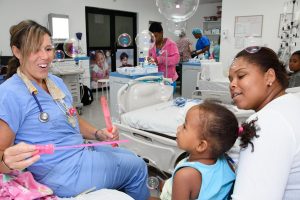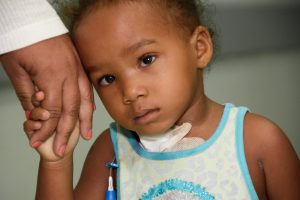
The ICU is momentarily effervescent. Two-year-old Mileisy blows bubbles with adorable concentration. Tender smiles punctuate her strenuous exhales whenever she manages to launch a few bubbles into the air. Meanwhile, the two patients before her have graduated from bubbles to whistles and party horns. All are instruments of “play therapy,” toys that encourage patients to take deep breaths, a crucial part of recovery, but a painful thing to do after open heart surgery.

The last few days have been painful for some of the parents, too – certainly for Mileisy’s mom, Anairis. “I cried and cried while she was in there,” she admits about the six hours her daughter spent in the operating room, where surgeons successfully augmented her pulmonary artery. But Mom is collected now, on alert, her expression firm. “She’s a wild one. I have to really protect her from now on, more than I did before,” she says. It seems odd, because Mileisy is healthier now, stronger, so why protect her more? “I think that during her surgery – and heart surgery is no small thing – it was the closest I’d ever felt to losing her.”

A few hours later on the cardiology floor, Anairis makes it a point to express her many thanks to everyone who made her daughter’s medical care possible. Meanwhile, Mileisy is coloring, play therapy that encourages her to sit up. Despite herself, every time she glances at her daughter grinning into a coloring book, Anairis’ face discloses moments of genuine, if brief, delight and relief. Perhaps play therapy is as emotionally restorative as it is physically, and a bit contagious, too.
